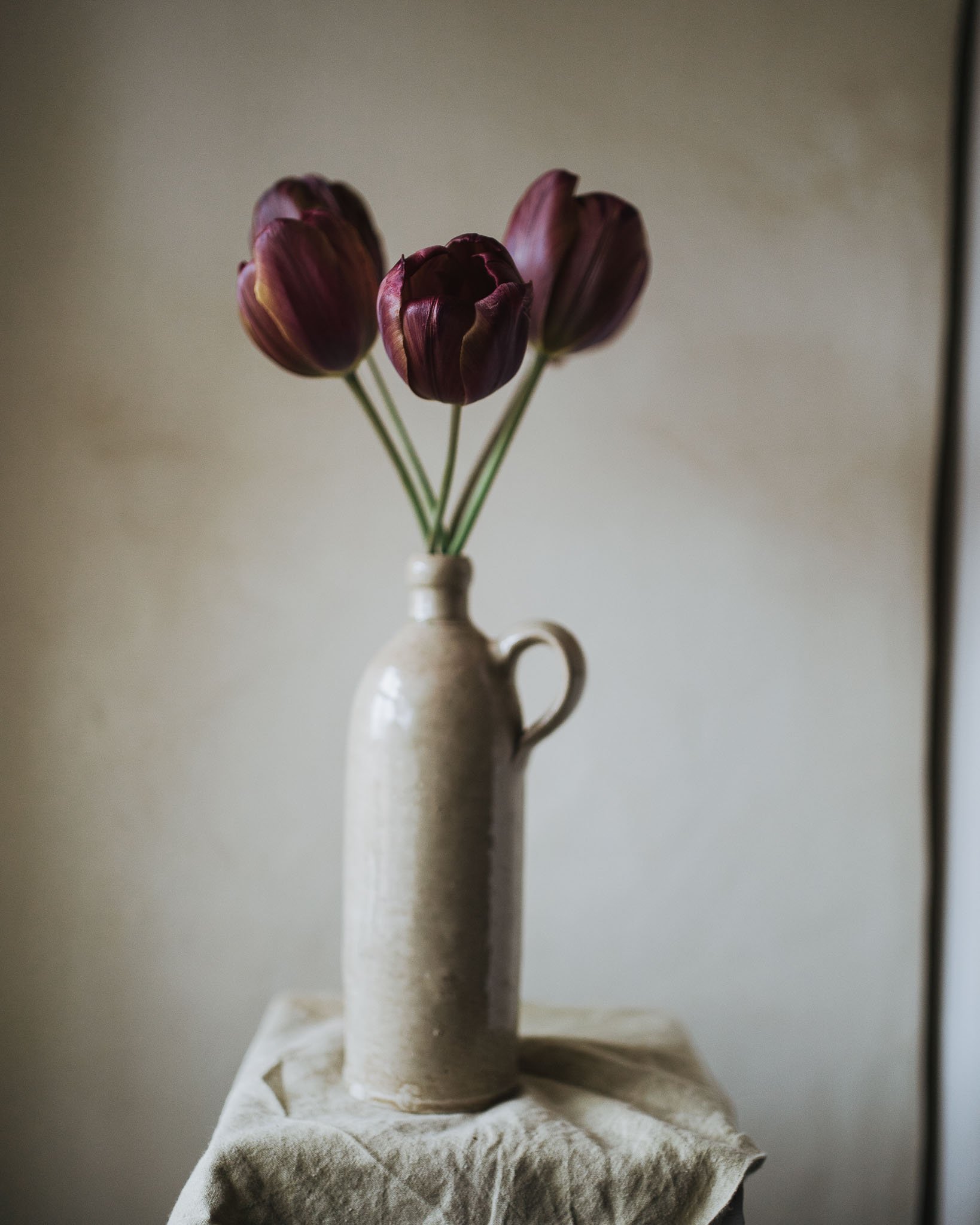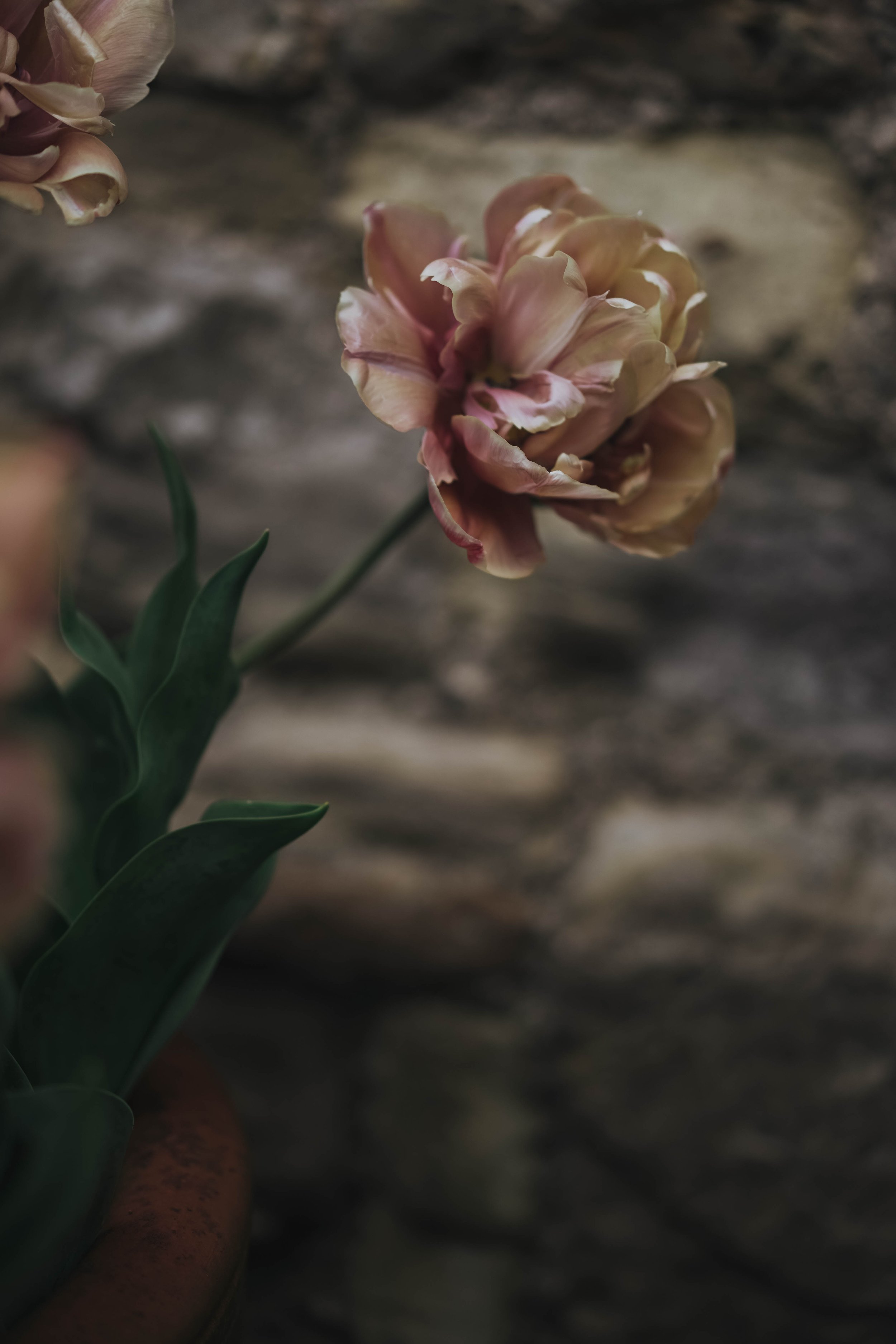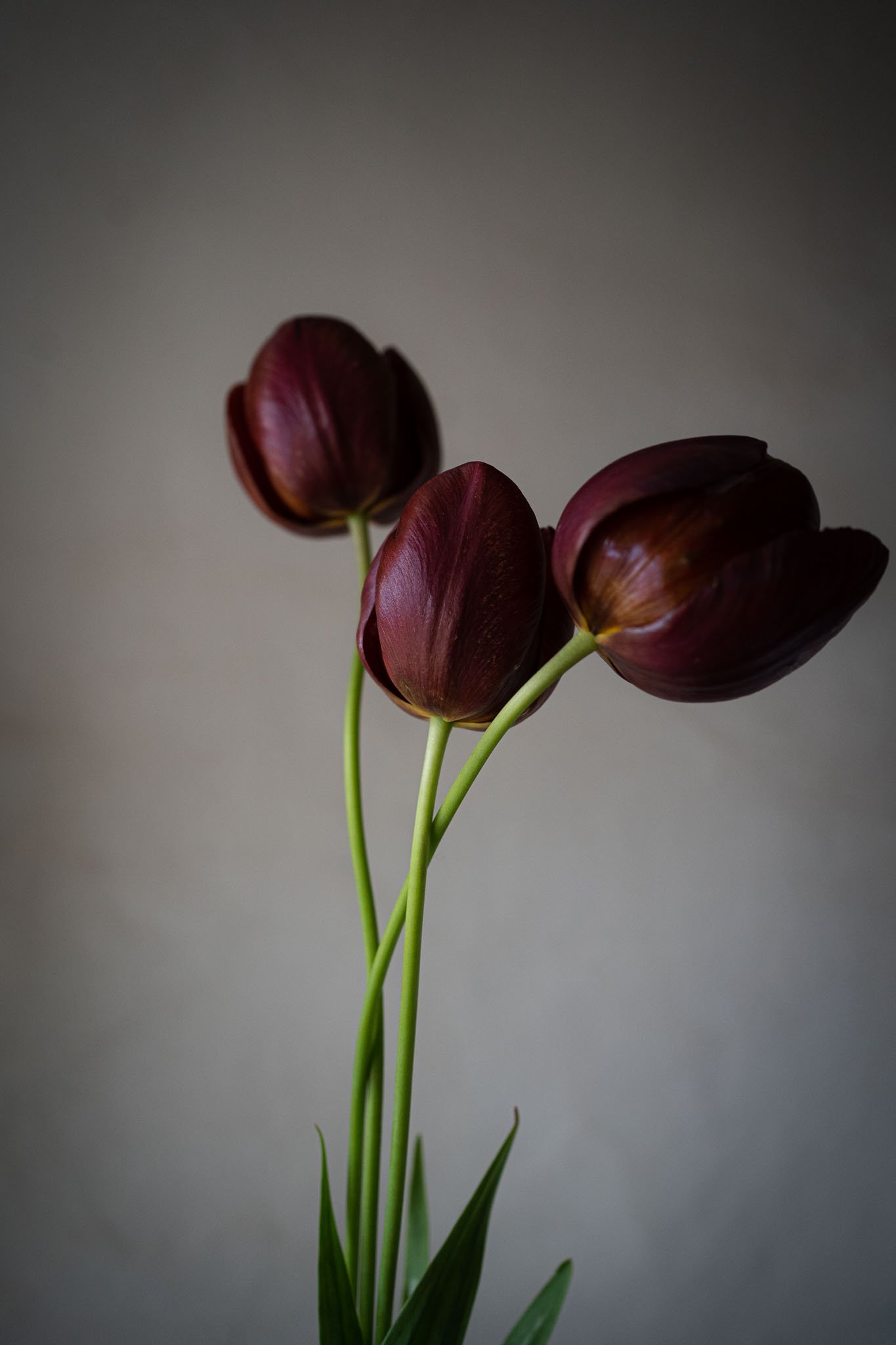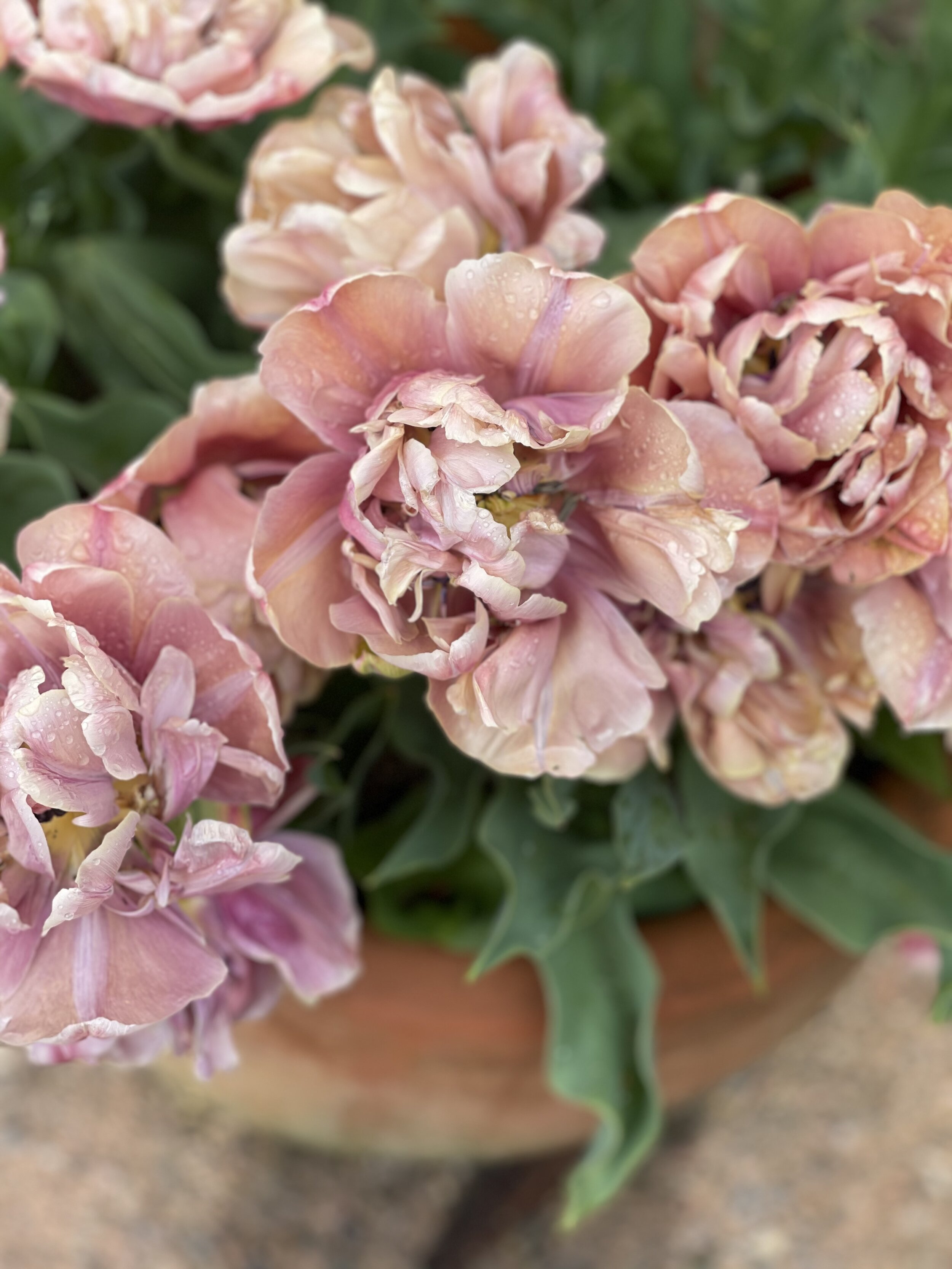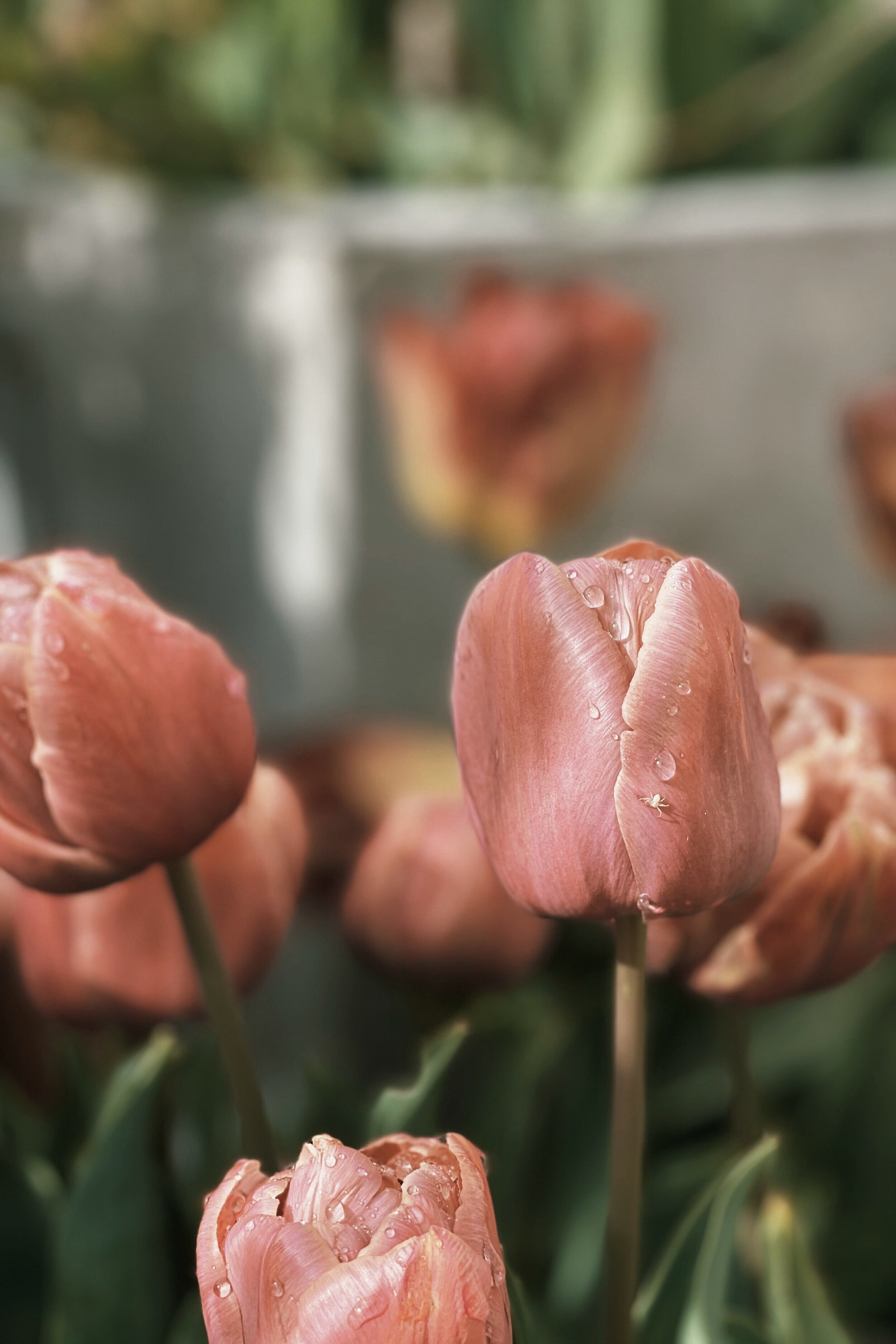A Tulip Q&A
Is it me, or do tulips start the spring? I embraced the blossom, I enjoyed the narcissi, and I blinked and I missed the hellebores. But I am here for the tulips.
I have been collecting some Q&A’s over the last twelve months and, like a sprinkle of magic, I have added a few of my own.
Q&A about tulips
Your three must-have tulips
Ok, no-one asked me for this, but I asked Polly and this is the question I always want to ask everyone about everything. I could name you, with no notice, my top three peonies, my top three roses, even my top three campanula. Here are my top three favourite tulips. Being something of an obsessive, some of them are eye-wateringly expensive and rare. Sorry.
If Dom Pedro and Absalon look similar in the photographs, I should mention that Absalon is broken and and smokier colour. This is like the moment when I say that my Irish setters look completely different, they do, but you have to get your eye in first.
Tips on making them come back?
The key thing the remember is that bulbs need to store energy after flowering on order to have enough in them to produce a flower next year. This energy comes from the leaves so the trick is simple. Cut your tulip rather short, leaving a least two leaves on the plant to harvest the summer’s sunshine. Make sure they are in a good, sunny spot to really bake. Of course, if you are not growing them to cut, but just to have looking lovely in the garden, you might not be cutting them at all. However, make sure you snap the seed head off when all the petals have dropped, because swelling a seed head is hard work and will deplete the bulb, which is the opposite of what you want. Also do this with narcissi if you want to bulk up the bulb for next year’s flowering, but many daffodils will self sow so you can leave them if you want a drift to spread. This isn’t ever really going to work with tulips; make it all about the bulb.
Most people will tell you that there are varieties that are more likely to come back, and they are not entirely wrong. Viridifloras are pretty reliable for example. However, with a hot summer and a little judicious seaweed feeding, I have had pretty much all varieties go on for a few years. They might be a little smaller, but I never find them less beautiful for that.
What do I do with floppy tulips?
One of the first lessons at flower school is how to straighten your tulips stems. Tulips are quite unusual in that they will ‘fix’ in the shape that they are in when you give them their first big drink. The trick is to wrap them in a collar of newspaper to get them all straight, cut an inch off the bottom, and then put them in deep cool water. I mean, my personal view if that if you want perfectly straight tulips, you can get these from anywhere. What I adore about my own tulips is that they are quite frequently more imaginative than I am when it comes to floral design techniques.
And say what you like about tulips, no other flower dies with such style.
What do I do if some of them seem to have come up without flowers?
First of all, they might just be waiting. There are many varieties that are late and, peering into my pots, the later varieties are still forming buds. I have pulled out the earlies and mids to give them a bit more space (I did pack my containers tight) and I will give them a watering can of water with a teaspoon of seaweed or nettle tea. Even if it is raining, watering pots is crucial. Generally, tulips flower in the following order:
Emperor
Double early
Single Early
Darwin Hybrid
Greigii
Triumph
Viridiflora
Parrot
Lily Flowered
Double Late
Single Late
My lilies have only just opened. My parrots are still tight in bud. If you think that they should already be out by now, the only other thing that might bring them on is some some good sun. If they are looking really sad, can you move them to get more light? Even into a greenhouse if you can.
& the opposite, what if they are coming up with short stems?
Some years, the tulips seem to be stubby, and the flower heads come up at the same time as the leaves. When someone asks me this, I always ask if they are in pots and if they have been watered. Plants want to live and so, under stress they will prioritise the flowers and all their reproductive systems over stem length and foliage. Bulbs in the ground tend to do this less because they have access to more moisture and minerals from the soil, but pots, pots need a little bit more tending.
How to make a tulip in a pot less stressed, water every two or three days, and once a week, add a capful of organic seaweed feed to the watering can. The difference that this makes is magical, and tulips can put on inches of growth in a day with a bit of input.
The only other time the foliage and the flowers might get out of step is if we have a super cold March and then a hot spell in April. This gives me the chance to do my favourite trick, using shade. I have an upper and a lower level on my greenhouse staging and putting the pot of tulips on the lower one means that the tulips reach for the light, and then you have the most beautiful, elongated, elegant stem. If you are extra lucky, you might get a gentle curve.
Why are my Belle Epoque’s (or other popular variety) not as lovely as I expected them to be?
Ah. The perennial problem of supply and demand. Creating new tulips takes time. A few seasons to get bulbs up to a good size to produce good blooms, and keeping the colours true. When there is a sudden explosion in popularity (as in, Queen of Night has always been ubiquitous, so the bulb suppliers are geared up for it), the process becomes a bit rushed. Substandard, not quite right bulbs slip into the system, bulbs can be smaller or not as good quality. Belle Epoque has really suffered with this for the last few years and I think Dom Pedro and Absalon are now showing signs. I can’t necessarily recommend a reliable source because the problem goes back further than the suppliers - it’s right back to the fields and the bulb breeders. I truly don’t know how many of those there are, but I speculate that it is only a handful, and they then sell on to Peter Nyssen, Sarah Raven etc, and the issues get passed on.
You can make the most of the bulbs you have (good drainage, a little feed every so often, full sun in the day) but the best way of getting round this problem is to be a trailblazer and discover the next big thing before anyone else does.
Or jump on a trend just as everyone else has got bored of it and there is surplus stock everywhere…
(Another reminder to take photos on your phone. You will think that you will remember when everything happened, you won’t. Your phone remembers everything tough.)
If you would like to read more about tulips and tulips growing, do have a read of Polly Nicholson’s interview. I am seriously considering only growing historical tulips this year, although only because Dom Pedro counts. I may even be persuaded to dig a trench.

